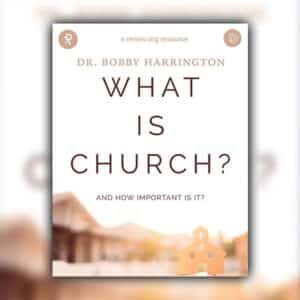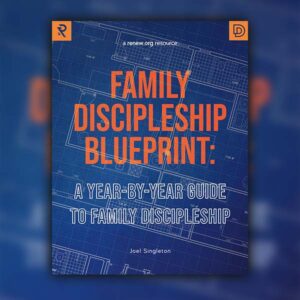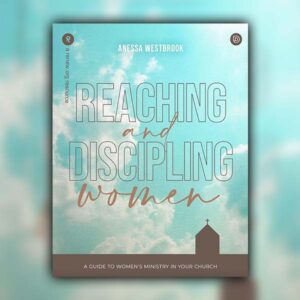Is the Bible Reliable

People today are skeptical about everything.
When we hear a deal that seems too good to be true, it usually is. Not everything you see in print or online can be held as truthful or trustworthy. That same skepticism also falls on the Bible. It is common today for people to think that the Bible is an old, outdated document that has been modified and changed over the years, and is no longer relevant for modern life.
So why do Christians believe that the Bible is God’s Word? The Apostle Peter writes about the credibility of the Bible in (2 Peter 1.16-21 ESV); “For we did not follow cleverly devised myths when we made known to you the power and coming of our Lord Jesus Christ, but we were eyewitnesses of his majesty. For when he received honor and glory from God the Father, and the voice was borne to him by the Majestic Glory, ‘This is my beloved Son, with whom I am well pleased,’ we ourselves heard this very voice borne from heaven, for we were with him on the holy mountain. And we have the prophetic word more fully confirmed, to which you will do well to pay attention as to a lamp shining in a dark place, until the day dawns and the morning star rises in your hearts, knowing this first of all, that no prophecy of Scripture comes from someone’s own interpretation. For no prophecy was ever produced by the will of man, but men spoke from God as they were carried along by the Holy Spirit.”
Like a prosecuting attorney, Peter makes a case for the reliability of Scripture based on two pieces of evidence: eyewitness testimony and trustworthy documents.
Eyewitnesses
Far from myths and fabrications, Peter’s testimony about Jesus came from his own experience as an actual eyewitness to the person of Jesus Christ. The writers of the New Testament Gospels were actually there when these accounts occurred. They saw Jesus in person, they watched His gruesome death, and they spoke with Him after His resurrection. They were eyewitnesses to all these things.
Peter declared in (Acts 2.32 NIV), “God has raised this Jesus to life, and we are all witnesses of it.” He said again in (Acts 4.20 NIV), “we cannot help speaking about what we have seen and heard.”
In 1 Corinthians 15, The Apostle Paul mentions fourteen eyewitnesses and references more than 500 who saw Jesus raised from the dead. He encouraged the skeptics to ask them about what they saw. Matthew and Mark list women who were a part of the early Christian movement who witnessed Jesus, and Luke adds more.
Christianity has always been rooted in history! All through the Gospels you find historical facts — names, times, dates, locations — that corroborate the writers’ testimonies. Classical historian and scholar, Colin Hemer, painstakingly combed through the book of Acts and identified 84 facts that are confirmed in secular historical and archaeological research. There are digs all over Israel today, and every year more and more discoveries are made that substantiate the Biblical record. There are at least ten ancient non-Christian writers within 150 years of the life of Jesus who give very similar information about Jesus.
Peter was saying, “I’m not giving you myths — I’m giving you my word. I saw what I saw.” These men chose to die holding on to their testimony rather than to live denying the truth.
Trustworthy sources
Peter went on to say that the Biblical record is reliable because it came not from the thoughts and intentions of a person who decided one day to write the Bible, but actually was a supernatural work of God. Consider how the following facts speak to the Bible as a divine work of God:
The uniqueness of the Bible
Unlike the Book or Mormon or the Quran, the Bible wasn’t written by just one person trying to start a religious movement. The Bible is a compilation of sixty-six separate books written over 1,500 years and forty generations, by forty different authors from every walk of life (kings, servants, shepherds, poets, statesmen, scholars, military generals, tax collectors, doctors and fishermen). The Bible was written in different places (wilderness, dungeons, palaces, prisons, on the battlefield and while watching sheep). It was written on three continents; Asia, Africa and Europe. It was written in three languages; Hebrew, Aramaic and Greek. It covers all kinds of controversial topics about God, men and the afterlife. Yet in all its diversity, it is seamless, unified and singular in its message.
The exposure of the Bible
The Bible has been read by more people in more languages than any other book in history. The complete Bible has been translated into more than 400 languages, and portions of the Bible have been translated into more than 2,500 languages. The United Bible Societies’ network of organizations distributed 633 million portions of Scripture around the world in the year 2000.
The resiliency of the Bible
The Bible has survived attacks. From Communists to college campuses, from ancient Rome to modern Russia, the Bible has been banned, burned and outlawed, yet it continues to be read and reproduced more than any other book in human history.
The authenticity of the Bible
Biblical and secular scholars agree that the original documents of the New Testament were written within the first century — thirty to sixty years after the death of Jesus. We even have ancient creeds in the New Testament that date back to just a few years after the death of Jesus.
To put this in comparison, the writings of Buddha were penned 500 years after his death. Caesar’s, “The Gallic Wars,” was penned almost 1,000 years after the death of Caesar. Homer’s, “Odyssey,” was written 2,200 years after the life of Homer. These are all considered authentic documents.
In addition, the New Testament’s vast number of ancient manuscripts reinforces its accuracy. There are more than 5,700 Greek manuscripts of the New Testament. Add to that 10,000 in Latin and another 15,000 in various languages, and we have close to 30,000 ancient manuscripts and/or fragments of the New Testament today. Compared to other ancient writings, this is a virtual avalanche of documentation. Most ancient works have only a handful of documents. The accuracy of Scripture is also supported by ancient secular historians, Roman military correspondence and early church fathers who quote and verify the New Testament scriptures.
The historicity of the Bible
It seems that every week, we are discovering more and more verification that the Bible is historically true. For example, until recent times there was no physical evidence to prove that Pontius Pilate, the governor who condemned Jesus to death, ever existed. Skeptics pointed to that lack of evidence as Biblical error.
In 1961, however, archaeologists uncovered a large limestone block, and chiseled in the stone was the name Pontius Pilate, a prefect of the Roman province of Judea from 26-36 Ad. I’ve seen this with my own eyes. Once again, the Bible was proved to be historically reliable. William Albright, the famous Bible scholar and archaeologist wrote, “Discovery after discovery has established the accuracy of innumerable details and has brought increased recognition to the value of the Bible as a source of history.”
The accuracy of the Bible
Many purport that the Bible is filled with errors. No one has put this view forward more than self-proclaimed agnostic, Bart Ehrman, the James A. Gray distinguished Professor in the department of Religious Studies at the University of North Carolina at Chapel Hill.
But is it true? Here are the facts: It is true that the original ancient autographs or writings of Paul and the Gospels no longer exist. Those parchments decayed many years ago. What we have today are ancient manuscript copies of the originals. It is also true that there are variances between the manuscripts.
However, these variances do not call into question the accuracy of the Bible. Why? Two reasons: 1) The sheer number of manuscripts we have today makes it easier to spot variances and discern what the original actually said. 2) The vast majority of these variances are spelling or syntax changes. Not one variance challenges or changes any major teaching or tenet of the faith. Not one!
With the discovery of the “Dead Sea Scrolls” between 1947 and 1956, ancient documents were found that predated the earliest documents by a thousand years and proved current copies to be extremely accurate.
To say that the Bible you have is filled with errors and therefore cannot be trusted is simply not true. What is true is that with all its diversity of time, authorship and language, the fact that it does not contradict itself, and moreover, the fact that the message of Jesus is unified, clear and compelling, is in itself mind blowing! Only God could do that!
The prophetic nature of the Bible
The Bible contains prophecies written hundreds of years in advance that have actually come true. Not just general prophecies like those found in the writings of Nostradamus or the “Farmer’s Almanac,” but specific prophecies about the rise and fall of nations, the comings and goings of kings and the identity of the messiah.
The potency of the Bible
The message of Jesus has transformed people and cultures for more than 2,000 years. Peter was just a normal fisherman, but Jesus transformed him into a powerful leader of a movement. All those who heard the Gospel were changed in the early church and refused to deny their faith in Jesus, even in the face of horrific persecution. Today, people’s lives are completely transformed simply by reading the Bible!
This blog originally appeared at: Is the Bible Reliable – discipleFIRST and features an excerpt from one of our books, Reach Your World.
Because of the importance of intentionality in disciple making, we at Discipleship.org are going to emphasize this skill set and mindset over the next four months. Please join with us and seek to share understanding, insight, and practical tools so that you can become skilled at intentionality in relational disciple making and you can help those on your team or in your leadership group to do the same. There are four ways in which we are emphasizing intentionality to help you in the next four months.
- Discipleship.org City Tour Forums – our four City Tour Forums are designed to help you and your team both understand and develop an intentionality posture. The tour is comprised of one day, high impact forums where there will be teaching and round table discussions. Every attendee also gets a copy of Brandon Guindon’s new book, Intentional: Living Out the Eight Principles of Disciple Making.
Click the image below for more information.

Take the FREE Individual Disciple Maker Assessment – we designed this assessment with a team of national and international disciple making leaders to help each individual be able to evaluate their disciple making mindset and skill. Just by taking this assessment, you will gain an appreciation for the value of intentionality, along with a sense of how you can increase your own level of intentionality. Click the image below to take the assessment.

- Read the short FREE book, Becoming a Disciple Maker: The Pursuit of Level Five Disciple Making – Bobby wrote this short eBook with statistician Greg Wiens to help you understand the mathematical and practical impact of one person’s disciple making efforts and skills.
Click the image below to download this free eBook.
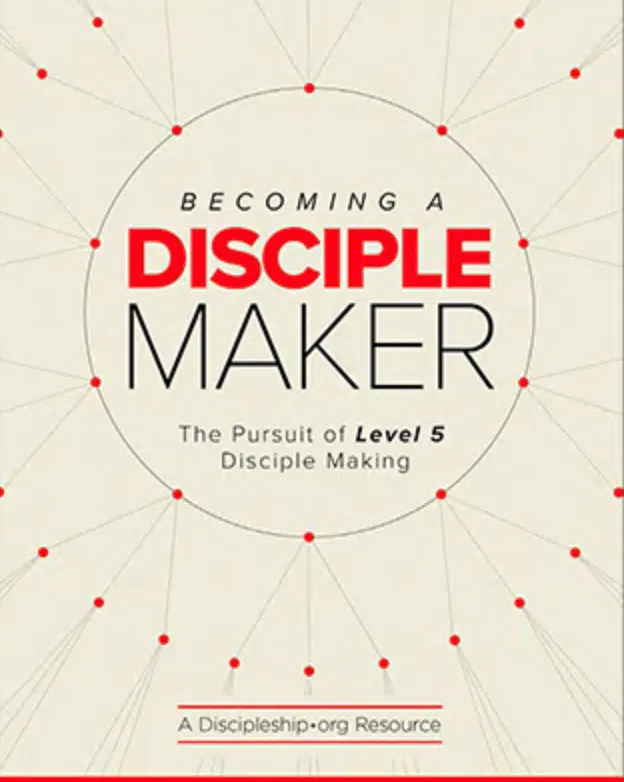
- Read Brandon Guindon’s book, Intentional: Living Out the Eight Principles of Disciple Making – Brandon wrote this Discipleship.org book and Zondervan is publishing, because the understanding and practice of disciple making is so crucial. Every attendee at each of our City Tour events (Nashville, Houston, Dallas and Raleigh), as mentioned above, will receive a FREE copy of Brandon Guindon’s book.
Click the image below to order Brandon Guindon’s book from Amazon.com.
Please join with us in this quest to better understand and practice intentionality. It will help us all to become more and more like Jesus, the world greatest disciple maker.
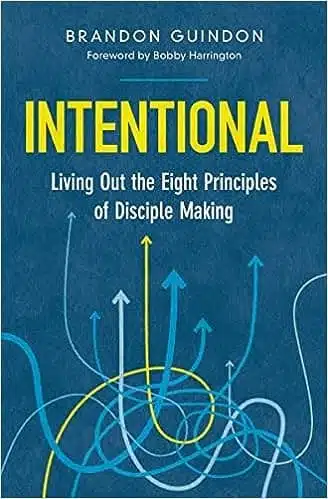
If you have enjoyed reading this, please consider joining our email list!
